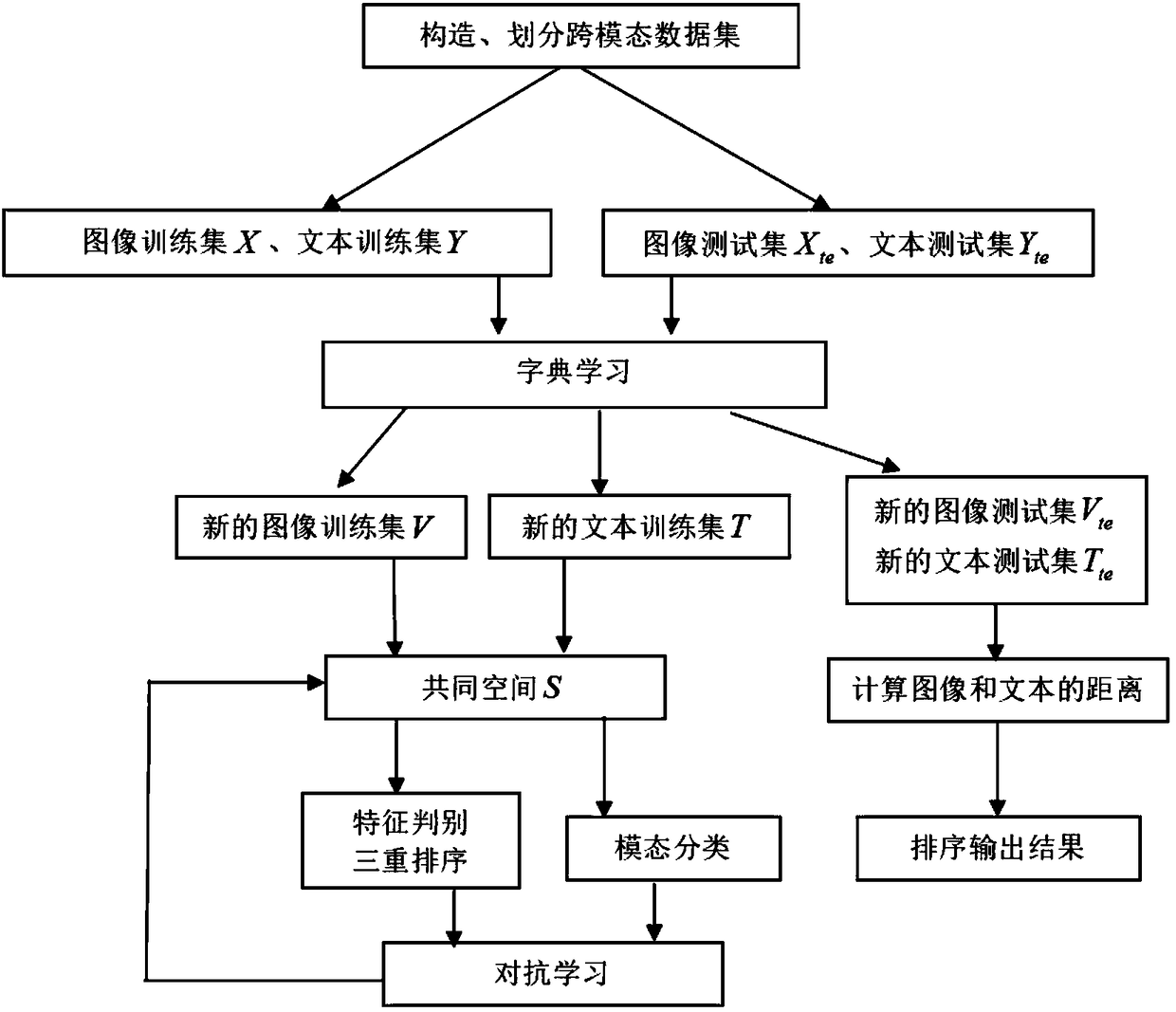A method and system for counteracting cross-modal retrieval based on dictionary learning
A dictionary learning and cross-modal technology, applied in the field of cross-modal retrieval, can solve the problems of not having the maximum correlation, ignoring the statistical characteristics of multi-modal data, and unable to maintain the inherent statistical characteristics of the original characteristics of the modality
- Summary
- Abstract
- Description
- Claims
- Application Information
AI Technical Summary
Problems solved by technology
Method used
Image
Examples
Embodiment 1
[0059] This embodiment provides an adversarial cross-modal retrieval method based on dictionary learning, and the specific steps are as follows:
[0060] Step S1: Obtain the underlying features of images and texts, construct a data set including image modalities and text modalities and their semantic labels, and divide them into image training set, text training set, image test set and text test set.
[0061] The image training set is denoted as d v is the image feature dimension, and m is the number of samples. The text training set is denoted as d t is the text feature dimension, and m is the number of samples. X, Y are feature matrices. The image-text pairs in the training set are denoted as P={X,Y}. In the same way, we can divide the test set X of images and text te , Y te .
[0062] Taking the Wikipedia-CNN dataset as an example, the Wikipedia-CNN dataset contains 2866 image-text pairs and their corresponding semantic labels. 2173 image-text pairs are randomly...
Embodiment 2
[0104] The purpose of this embodiment is to provide a computing system.
[0105] A confrontational cross-modal retrieval system based on dictionary learning, comprising a memory, a processor, and a computer program stored on the memory and operable on the processor, and the processor implements the following steps when executing the program, including:
[0106] Obtaining the underlying features of image data and text data, and constructing a training set and a test set of images and text respectively based on the underlying features;
[0107] Construct a dictionary learning model, train based on image and text training sets, and obtain image dictionaries, text dictionaries, image reconstruction coefficients and text reconstruction coefficients;
[0108] According to the image dictionary and the text dictionary, calculate the image reconstruction coefficient and the text reconstruction coefficient of the test set;
[0109] The image reconstruction coefficient and text reconstr...
Embodiment 3
[0114] The purpose of this embodiment is to provide a computer-readable storage medium.
[0115] A computer-readable storage medium, on which a computer program is stored, and when the program is executed by a processor, the following steps are performed:
[0116] Obtaining the underlying features of image data and text data, and constructing a training set and a test set of images and text respectively based on the underlying features;
[0117] Construct a dictionary learning model, train based on image and text training sets, and obtain image dictionaries, text dictionaries, image reconstruction coefficients and text reconstruction coefficients;
[0118] According to the image dictionary and the text dictionary, calculate the image reconstruction coefficient and the text reconstruction coefficient of the test set;
[0119] The image reconstruction coefficient and text reconstruction coefficient of the training set, and the transposed form of the image reconstruction coeffic...
PUM
 Login to View More
Login to View More Abstract
Description
Claims
Application Information
 Login to View More
Login to View More - R&D
- Intellectual Property
- Life Sciences
- Materials
- Tech Scout
- Unparalleled Data Quality
- Higher Quality Content
- 60% Fewer Hallucinations
Browse by: Latest US Patents, China's latest patents, Technical Efficacy Thesaurus, Application Domain, Technology Topic, Popular Technical Reports.
© 2025 PatSnap. All rights reserved.Legal|Privacy policy|Modern Slavery Act Transparency Statement|Sitemap|About US| Contact US: help@patsnap.com



